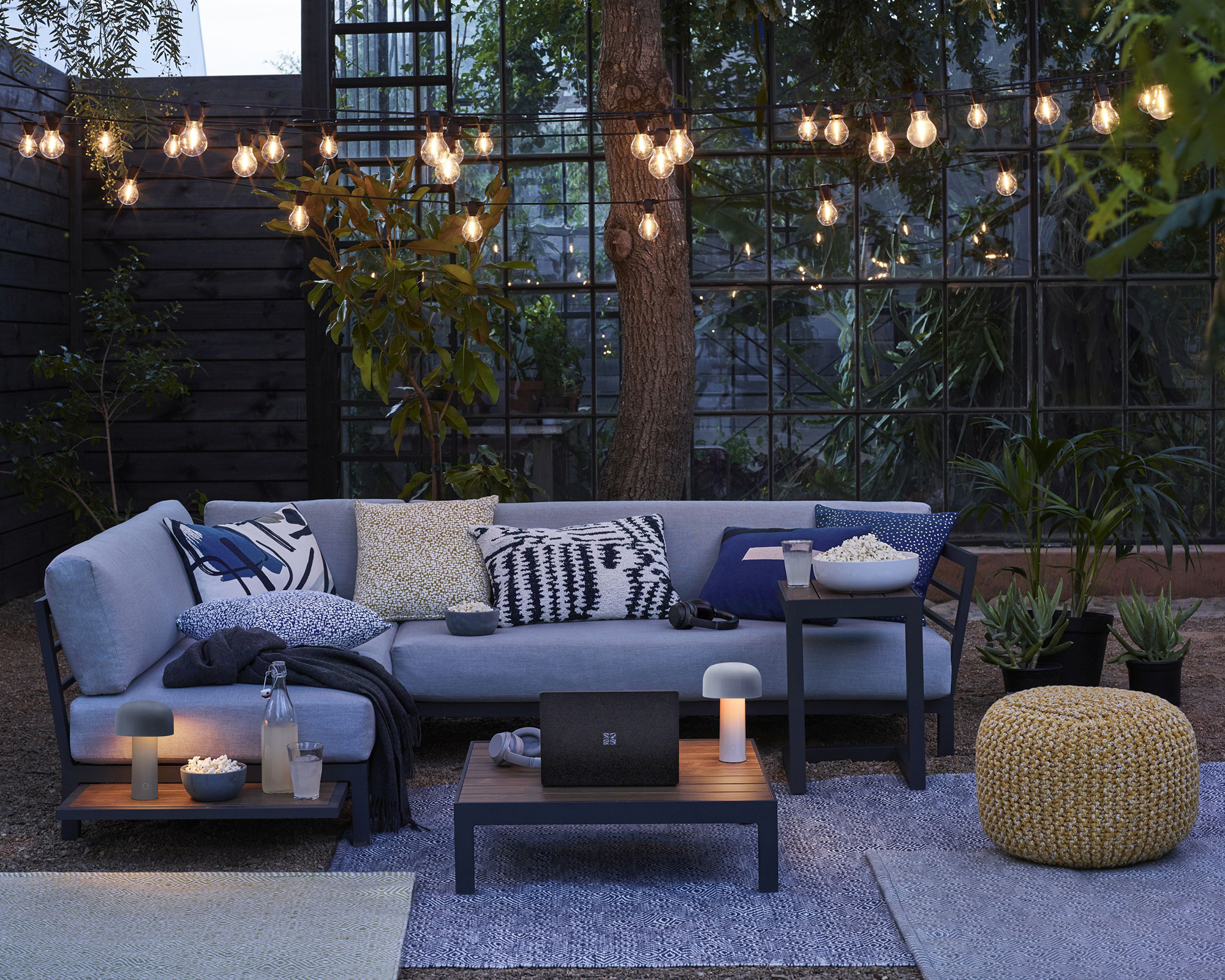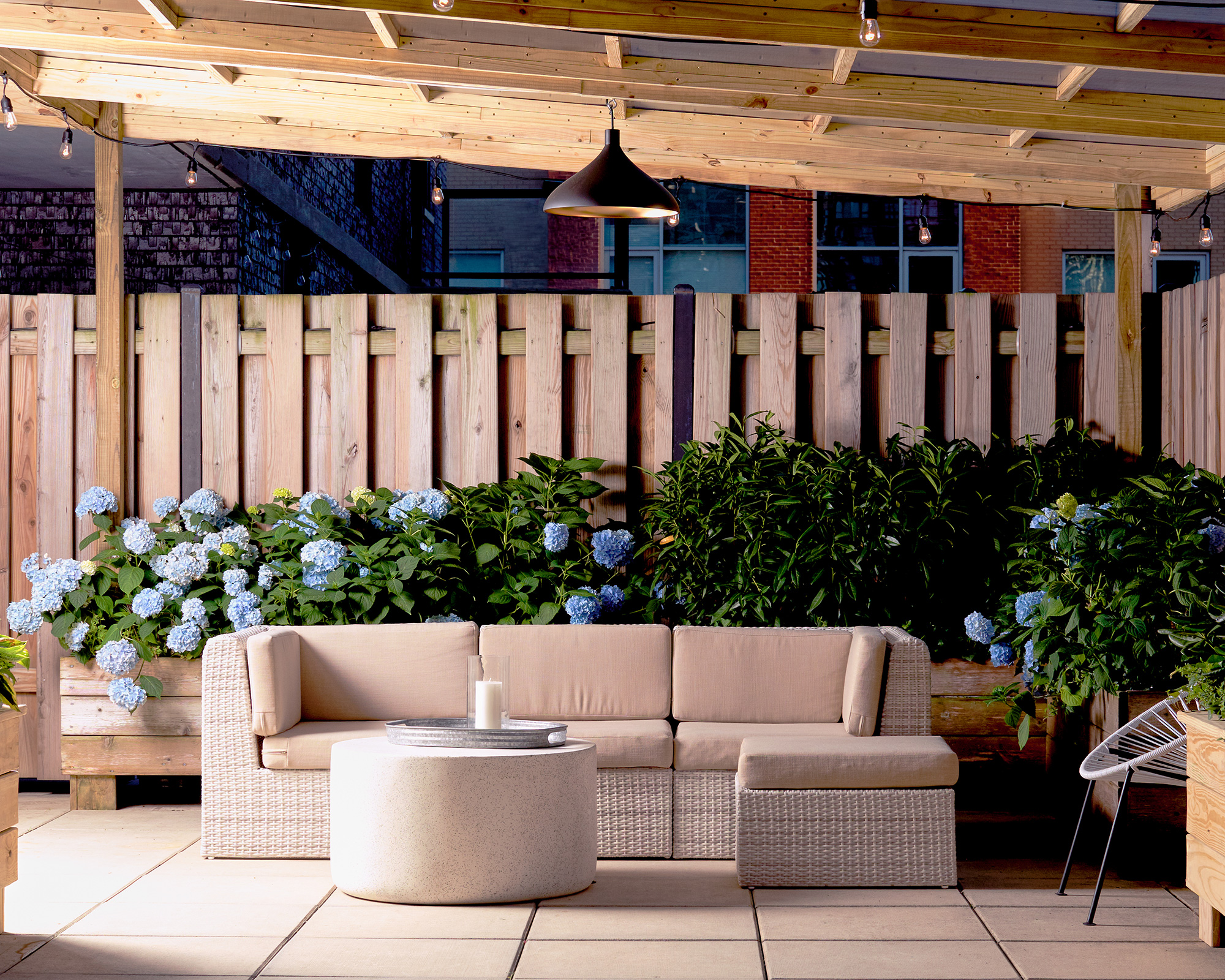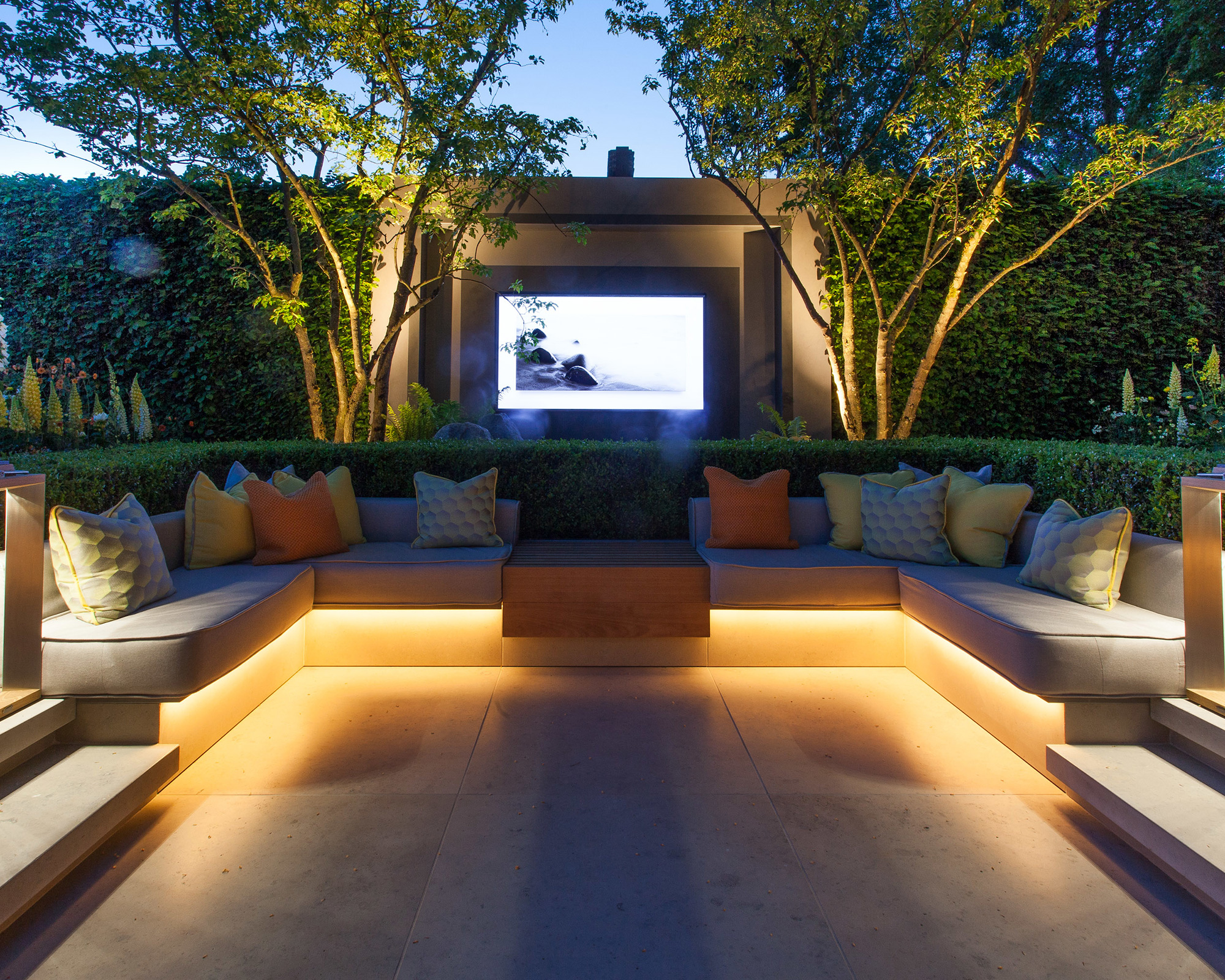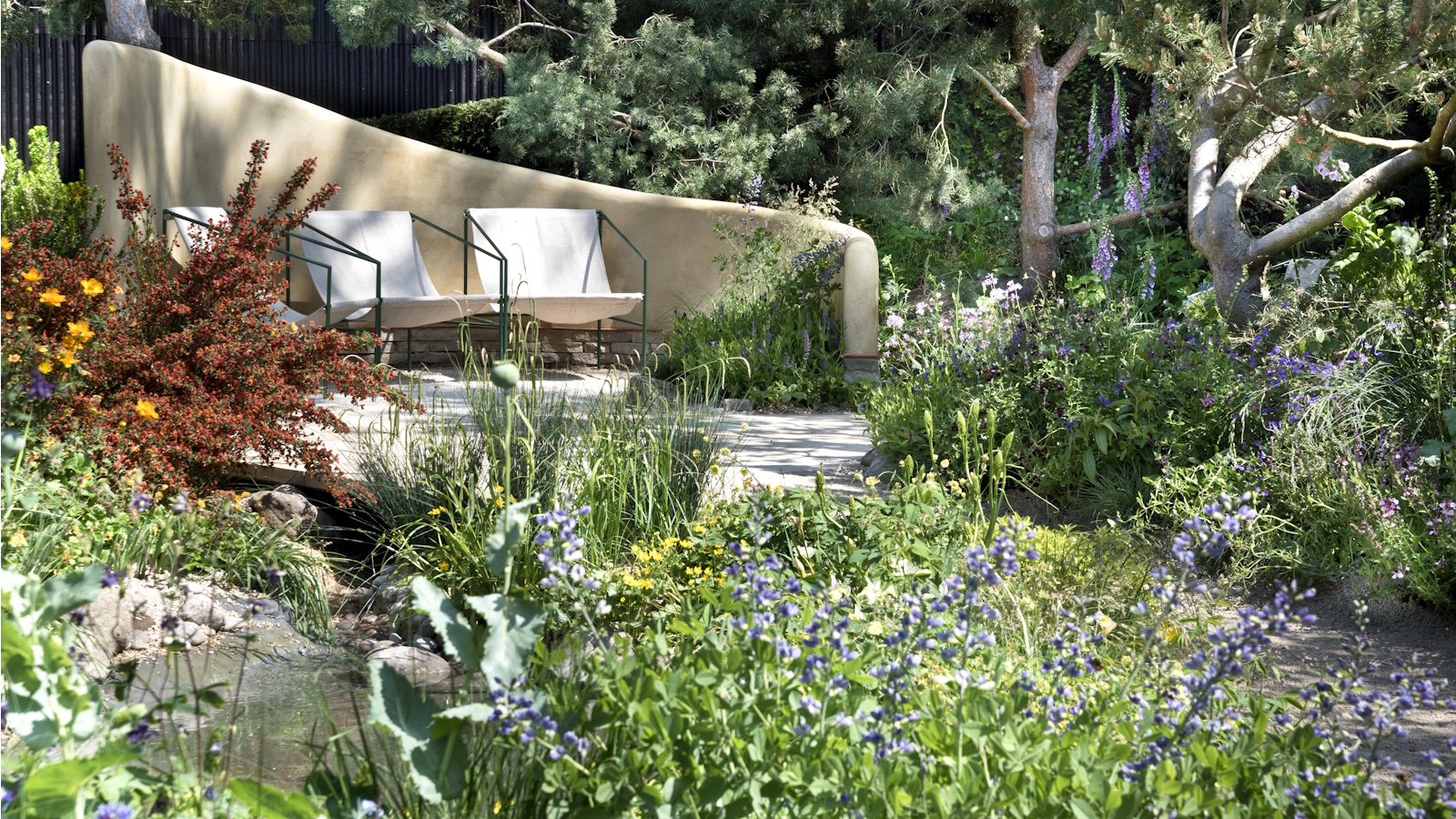How to install backyard lighting – everything you need to know
Learn how to install backyard lighting and make your al fresco space work harder with a well-considered lighting scheme


Wondering how to install backyard lighting? It's easier than you might think.
Whether you have a small urban courtyard or an expansive country estate, no area is too small to light; even a window box or a porch can be adorned with well-placed spotlights.
Clever backyard lighting ideas can create ambience whilst lighting pathways and making dark corners feel safe. They can also turn your backyard into a living area you can use after dusk.
So instead of heading indoors at nightfall or packing up the outdoor furniture in September, make your backyard work harder all day (and all year) long with clever lighting options.

Flexible outdoor lighting ideas can include anything from colors and beams, to clever solar garden lighting ideas or state-of-the-art digital systems.
Don't be swayed by all the options. Instead, ensure you find a garden designer to present a lighting plan that not only offers practical solutions to your needs, but also complements your garden ideas.
Or, keep it simple and choose a few highlight feature throughout your yard.
How to install backyard lighting
The approach you take to installing backyard lighting will depend on the type of lights you want to install, as well as the size and shape of your yard and gardens.
Outdoor ambient lights, pool lights and flood lights
Most often, installing new, permanent outdoor ambient lights or flood lights is a job for an electrician, since it will require adding a new power supply to the exterior of your home. Ditto goes for pool lighting ideas, since you'll want to ensure that the new lights are both safe and up to local codes.
However, if you are installing lights on your home's exterior walls (and have experience with basic electrical work), you can do the job yourself by running conduit from an existing outlet or circuit in your garage, to the new outdoor light. Just be sure to turn off the power supply before tackling the job.
How to install outdoor path and landscaping lights
If you are looking to install more complex lighting options for your backyard, employ a landscape architect or lighting designer who can help you reimagine your space from the ground up.
Whether you need patio lighting ideas, deck lighting ideas or you're uplighting trees in your backyard, these features will all need to be considered well before embarking on your lighting project. This is because the electric cables will need to run underneath the stonework or ground.
Installing simple, low-voltage lighting along a pathway or around a patio, on the other hand, is a job you can do yourself with a little research. The basic steps will require you to dig a shallow trench (check local codes, as most require wiring to be buried at least 6in deep) along the pathway where the wiring for your lights will run.
Then, you'll stake the lights into the ground and bury the wiring. Next, install a low-voltage transformer to power the lights, and connect it to your main power supply. Finally, connect the wiring from your lights into the transformer system.
How to install solar outdoor lights
If you're taking the DIY approach to installing backyard lighting and don't want to worry about wiring to the outdoors, or you simply want to be more eco-conscious, consider solar powered garden lights. These lights can simply be stuck into the ground, no electrical work required.
Outdoor solar lights are an excellent choice for lighting pathways, up-lighting landscaping features, and illuminating the front of your home. They also make your backyard lighting flexible, because you can move them wherever you need them.
How to match backyard lighting design and installation

If you have big ides for your backyard lighting design, speak to your landscape designer about what your practical needs are and how you want to 'feel' when you sit in your backyard.
'I find some clients might want a calm, minimalist space, whilst others might want a lush garden which feels totally enveloped. Lighting plays a huge part in creating both of these looks,' explains Boston-based landscape architect, Amy Martin.
Consider the placement of garden security lighting carefully and work out which essential areas require strong task lighting.
'Think about why you are lighting your garden,' explains Sally Storey from John Cullen Lighting. 'You tend to light at the front for security and for ease, and you light at the back to extend the space or to provide visual interest when you are entertaining.'
An outdoor kitchen, for example, will need strong lighting, whereas a seating space can be more ambient.
'If the back of your house has lots of windows, when you look out it will be like a mirror reflecting everything back. However, if you have lights in the garden, then it draws your vision outside and feels like an extension of the space,' adds Sally.
In general there are four different methods of lighting spaces in your garden: uplighting, downlighting, backlighting and spotlighting. A spotlight is useful to draw attention to a particular object from above, whereas uplighting happens from below.
Downlighting creates an effect by illuminating from a height, but in a more nuanced way (lighting the branches of a tree, for example) and finally, backlighting which involves beaming light from behind to create a silhouette and a sense of depth.
How do you illuminate a backyard?
Generally, avoid lighting which could appear too harsh and, if possible, avoid showing the source of the light. The most effective garden design can make lighting appear almost invisible, yet it feels inviting and memorable at the same time.
'I always recommend a combination of lighting,' notes Sally Storey. 'We like to use mini floodlights to illuminate lower foliage. Then a narrow beam spotlight for taller shrubbery such as a multi-stemmed tree.'
Consider where lights should be placed. 'I like to light downwards from a tree, so I use lots of sturdy wiring to 'hide' the lights within it,' explains Amy Martin.

When it comes to downlighting, it's imperative that the beam cast downwards is soft. 'Place the lights extremely high up in a tree – 5 meters is the minimum. This will avoid a glare down on to the ground,' notes Sally Storey. Uplighting should be subtle too, lighting up the wall of your fence from below works really well, for example.
Remember it can be as simple or sophisticated as you like. Think about unusual options, such as lighting a pool with a projector or using colored lanterns to light steps.
'For entertaining, I advise lighting underneath the seating, uplighting any trees, which will mimic the look of a standard lamp, and then finishing with lanterns either side. This will provide a low-level glow around the seating space,' explains Sally.
Whatever you do, you don't want things to look garish. Nestle lights in plants, suspend outdoor string lighting between trees, add lighting to steps and think carefully about your use of uplighters and downlighters.
You want to evoke a feeling of ambience, which is vital to achieving a successful garden design.
Sign up to the Homes & Gardens newsletter
Design expertise in your inbox – from inspiring decorating ideas and beautiful celebrity homes to practical gardening advice and shopping round-ups.

Steph Hendries is a freelance journalist who has contributed to many different interiors websites including Homes & Gardens, Ideal Home and Livingetc. She has also worked on a range of social content for property brands such as Zoopla and Boomin. Steph writes for Homes & Gardens Solved section, concentrating on DIY, how to, cleaning and organizing content.
-
 Victoria Beckham has a unique formula for perfect bedding: 'Very expensive sheets and cheap pillows' – you can follow her example from $15
Victoria Beckham has a unique formula for perfect bedding: 'Very expensive sheets and cheap pillows' – you can follow her example from $15Victoria revealed she goes for crisp, white bed sheets and pillows with neck support from Target – and you can shop similar buys at an ultra-low cost
By Hannah Ziegler Published
-
 I just discovered the best non-toxic product for getting rid of ants in your yard – and you probably already have it in your bathroom cupboard
I just discovered the best non-toxic product for getting rid of ants in your yard – and you probably already have it in your bathroom cupboardThis household item is an effective ant deterrent that doesn't leach harmful chemicals into your soil
By Tenielle Jordison Published